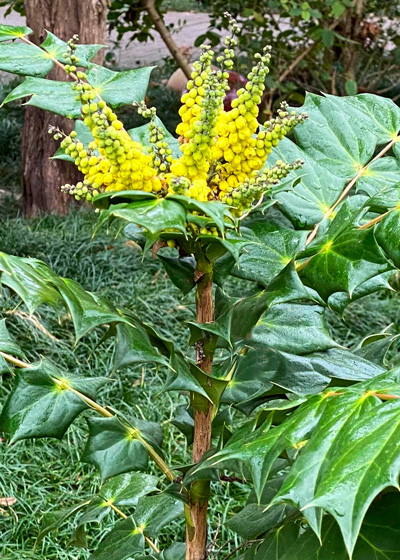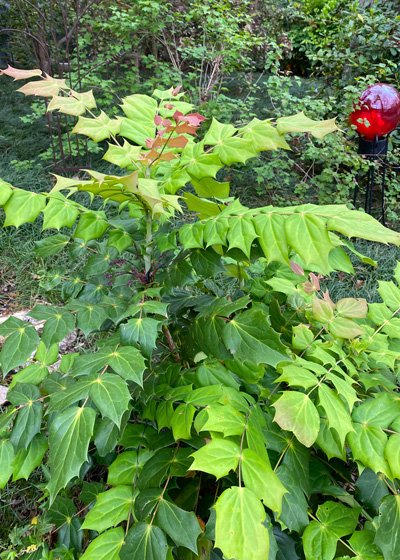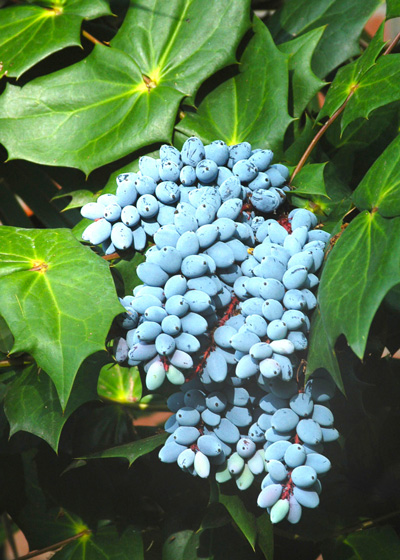Mahonia Magic by Steve Huddleston

Winter-blooming shrubs add floral beauty, cheer, and often fragrance at a time of the year when most other plants are dormant. Since so few other plants are in flower during the winter, these shrubs stand out that much more. Leatherleaf mahonia leads the pack.
How you might use it…
Leatherleaf mahonia has many places in the shady landscape. My favorite way to feature them is in a mass planting beneath shade trees. Rather than try to grow grass in places like that, I create a large shrub bed beneath the trees and plant several leatherleaf mahonias in a natural-looking, woodland-like manner throughout the bed.

Then, for contrast against the coarse-textured mahonias, I plant drifts of lighter green, delicately-textured southern wood fern (Thelypteris kunthii).
For a little color and to attract hummingbirds, I include drifts of red-flowering Turk’s cap (Malvaviscus arboreus var. drummondii). For textural contrast, you could also plant in combination with variegated liriope or mondograss (both fine textured) or leopard plant (bolder textured).
Or you could feature leatherleaf mahonia as a single specimen or accent plant, perhaps in a shady courtyard, at the corner of the house, or next to the front door. In that last case give it ample room to grow since its leaves are quite prickly.
What you’ll want to know…
• Common name: Leatherleaf mahonia
• Scientific name: Mahonia bealei
• Family: Berberidaceae, or Barberry family – along with barberries, nandinas and the Texas native shrub agarita
• Native to: China
• Source of name: 19th Century American horticulturist Bernard McMahon
• USDA Hardiness Zone: 6-9
• Growth form: Upright clumps, similar to standard nandinas – prune the same way (by cutting tallest canes completely to the ground).
• Rate of growth: Slow

• Exposure: Shade or limited morning sun; no afternoon sun
• Soil types: Not particular, but does best in highly organic, consistently moist soil. However, plant is somewhat resistant to drought.
• Mature size: 4 to 6 ft. tall, 3 to 4 ft. wide – several stems but very limited branching
• Leaves: Evergreen, blue-green to gray-green, 12 to 15 in. long, quite spiny (leaflets resemble holly leaves), each with 9 to 13 leaflets
• Flowers: Jan. and early Feb., bright lemon-yellow flowers in clusters at tops of stems; enticing to bees and appealing to gardeners seeking winter color

• Fruit: Borne in clusters, purplish-blue and showy, persisting throughout the spring until devoured by birds.
• How sold: Most commonly in 3-gal. pots – generally somewhat more expensive than other shrubs in same size of containers because of its comparatively slower growth.
